History of Omiya Bonsai Village
-
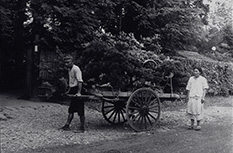
A group of professional bonsai gardeners from Tokyo immigrated to Saitama after the Great Kanto Earthquake in 1923, in search of spacious land, fresh air, and water suitable for creating bonsai. Omiya Bonsai Village was established in 1925. The photo was taken in the 1940s.
-
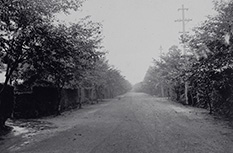
Upon its founding, the village had four residence requirements:
1. Possession of 10 or more bonsai
2. Agreeing to open their gardens to the public
3. No two-story houses
4. The use of hedges as live fencing
The tranquil scenery of Omiya Bonsai Village has been preserved since the time it was established. -
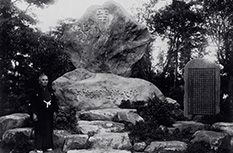
SHIMIZU Ritaro (Seian) contributed greatly to the establishment of Omiya Bonsai Village. In March 1935, volunteers gathered for the 10th anniversary of the Village and erected a monument to praise his achievements. In this picture, you can see the completed monument and Seian standing next to it.
Prosperity of Omiya Bonsai
-
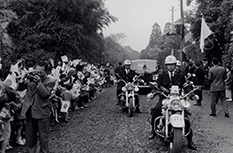
The name of Omiya Bonsai Village is known all over the world, and along with foreign tour groups, it is visited by overseas bonsai lovers wishing training and VIPs from around the world.
This photo shows children waving the Japanese flag and greeting state guests visiting the Village. -
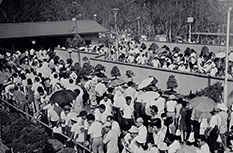
In the Japan World Exposition (Expo) held in Osaka in 1970, the Japanese government presented a bonsai and suiseki exhibition.
Most of the bonsai exhibited then were from Omiya Bonsai Village. -
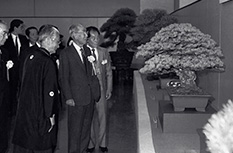
In 1989, the first World Bonsai Convention was held in Omiya City (now Saitama City), Saitama Prefecture.
The Convention was held for four days and about 1,200 bonsai lovers from 32 countries around the world participated in the demonstrations and workshops, which were a great success. -
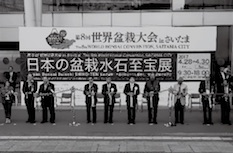
“The 8th World Bonsai Convention in Saitama” was held in 2017. Twenty-eight years after the first one in 1989, the Convention once again represented a new start for bonsai from Saitama City, the birthplace of the World Bonsai Conventions. While carrying on the tradition of bonsai art under the theme of “Bonsai, Towards the Next 100 Years,” the Convention communicated to the world the possibilities of bonsai loved by people of all generations. With approximately 120,000 visitors from over 40 countries and regions around the world attending the Convention and related events, the venues were alive with large numbers of people.
Famous Master of Omiya Bonsai
-
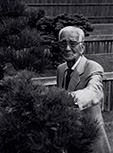
KATO Saburo (1915-2008)
KATO Saburo was the third generation owner of Mansei-en who also served as Chairman of the World Bonsai Friendship Federation, and played an active role as executive comittee chairman of the first World Bonsai Convention. He has also created a number of masterpieces of Ezo-matsu (Ezo Spruce) bonsai exceptionally the forest style and the bonsai with stone.